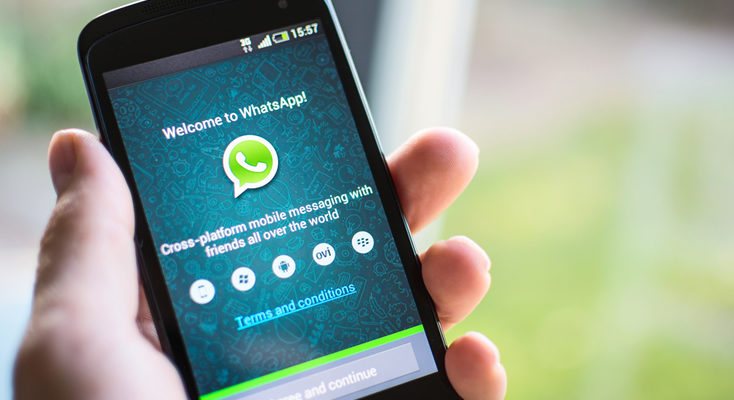In January of 2016, the company WhatsApp announced it was going to start testing tools that would allow businesses and organizations to communicate with users on its network:
“Starting this year, we will test tools that allow you to use WhatsApp to communicate with businesses and organizations that you want to hear from. That could mean communicating with your bank about whether a recent transaction was fraudulent, or with an airline about a delayed flight. We all get these messages elsewhere today – through text messages and phone calls – so we want to test new tools to make this easier to do on WhatsApp, while still giving you an experience without third-party ads and spam.”
In February, Facebook, the owner of WhatsApp, reported that WhatsApp had reached one billion monthly active users, outperforming their own mobile messenger app, which has a monthly user base of 800 million. They also reported that 42 billion messages and 250 million videos are currently being sent over WhatsApp every day!
So how can health insurers leverage this highly affordable, convenient and engaging new vehicle to create new marketing, sales and customer service touch points? Well, as a general overview for those who many not be familiar with the app, there are four different basic ways in which you can communicate using the app. The first is one-to-one chat, where you can message back and forth with one person like regular texting, but without using up any of your text data. The second is via a group chat, where you can invite 2-100 participants to communicate with you and each other. The third is via broadcast, where you can broadcast a message to 2-256 people, and create a multitude of broadcast lists targeted to different audience segments, however, unlike group chat, responses are only received by the broadcast sender. And, across all of these messaging options is the ability to send video and images, which can be great for submitting claims in real-time, sending product images to a customer or broadcasting an informational service video. The last way you can communicate is via WhatsApp Calling, where you can call a contact as you normally would, but using your data plan instead of your minutes.
Millennials, the Generation Y of young people, are difficult for insurers to reach via traditional channels. They find it time consuming to have to create an account and remember login details and want outreach that’s easy and always accessible. They want to be notified in real-time, provide instant feedback, take immediate action when required and receive instant response, and WhatsApp messenger is perfectly suited to meet their demands.
Now, you may be thinking, how can mobile messenger communications possibly be kept HIPAA secure or how am I to effectively communicate if unable to exchange data and documents? Well, WhatsApp delivered a solution to address both of those concerns. First, they deployed complete end-to-end encryption to support secure messaging. Next, they made it possible for users to share documents as part of a new update for iOS and Android. On Android, users who tap the paper-clip icon for attachments will see a “Document” button, while on iOS, users who tap the upload arrow icon will see the option to “Share Document” from the menu that appears. While for now, the file share feature is limited to PDF files, it does allow you to pull files from third-party cloud storage apps enabled on the phone, including Google drive, iCloud Drive, Dropbox and Quip, and these shared documents will also be protected by encryption. When sharing, WhatsApp displays a file preview of the PDF in a sidebar window, notating the number of pages, file size and type, so that you can ensure you are sending the right version to the right individual.
From pushing out engaging promotional videos, brochures and fliers to illicit product interest and awareness, to sending surveys and questionnaires to specific policyholder groups to gather rapid feedback, to featuring your WhatsApp number on pre-sale materials for instant response to sales inquiries, the potential of WhatsApp is monumental.
WhatsApp is no longer just an inexpensive way to stay connected with customers and field customer service queries, it is a medium choice of major players due to its proven potential to reduce operating costs, optimize customer service and deliver more timely, satisfying and authentic customer experiences. Smart insurers should be thinking about how they can use the app to meet digitally savvy millennial demands for more personalized and convenient outbound communications from their providers.


Comments are off this post